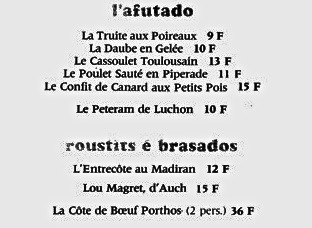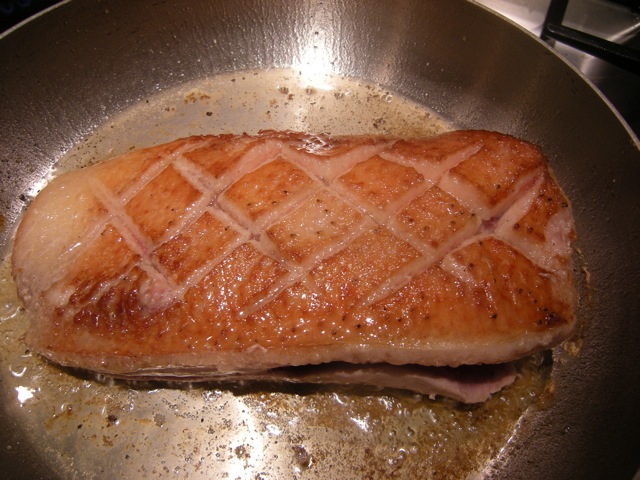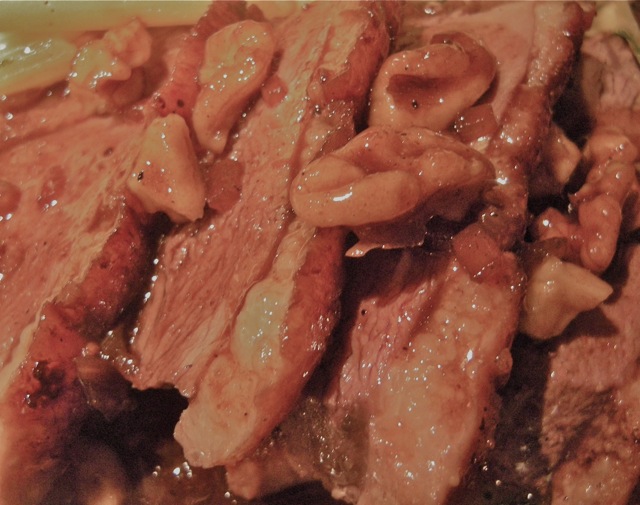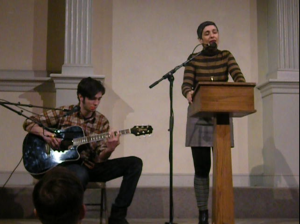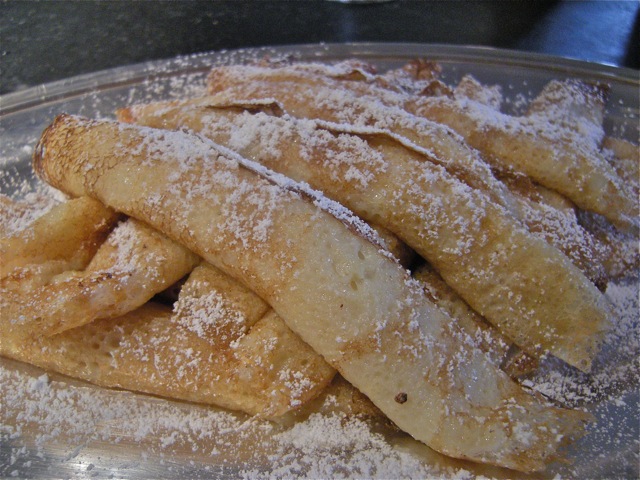I am back from Shikaakwa or ” Stinky Onion” or as we call it today Chicago. The name Chicago is believed to be the French deformation of what the Miami-Illinois called the wild onion growing along the Chicago River. As expected, the weather was cold but I was prepared for it and it didn’t bother me a bit, au contraire. I convinced — or rather lured— Pierre into some mega walks along Lake Michigan. He didn’t regret it. As for me, they:

Impress memory
North Shore:
Sky water cityscape
Jade turquoise mauve-gold
Lincoln walking from his chair
Meeting with Schiller
Three mermaid boys & three cranes
at the Bates Fountain
Mist moist lost
Urbs in Horto
Tropical gardens?
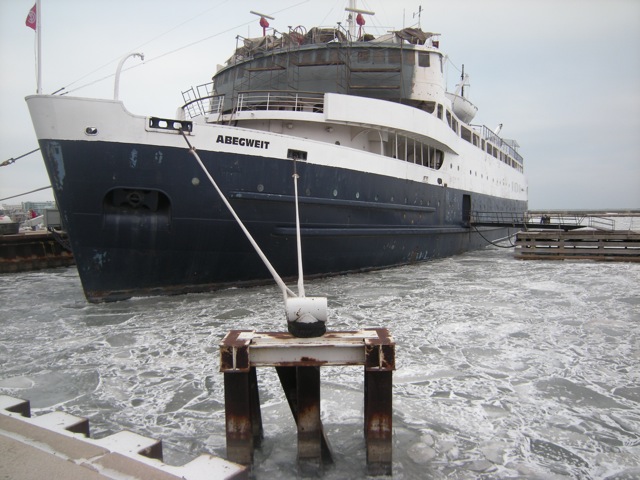
Town Shore:
Mi’kmaq memoirs
Abby tethered sways
Rippled reflections
Magalie’s fluo yellow
That’s a wake up call
Logan rears up
Lincoln sits down
Vulva building opens
To sharp German poetry.
South Shore:
Ice ducks republic
Gris black & white gold again
Rounds & sharps
Ice creaks ducks call
Republic alone
Fathoms the White City
No looking back at plastered Beaux Arts
Or Palace of Fine Arts
Science and Industry to prevail?
* * * *
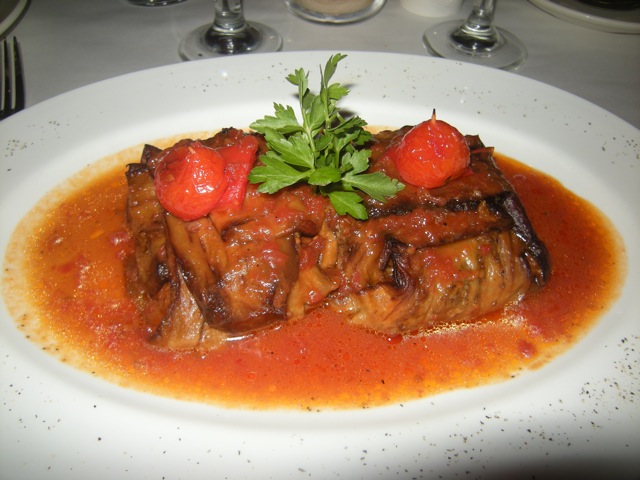
We had a marvelous dinner at Turquoise, a Turkish restaurant in Roscoe Village. Both my Patlicanli Islim Sarmasi —Braised lamb shoulder wrapped in eggplant and lamb jus, and rice pilaf ($ 17.95) and Pierre’s Kusu Sis Kepab —Lamb seasoned, skewered , grilled, served with vegetables, rice pilaf, and yogurt sauce ($ 17.95) were exquisite. A delicate tomato sauce topped the skillfully folded and perfectly cooked eggplant filled with fragrant marinated morsels of tender lamb. The rice pilaf was fluffy and buttery. Pierre’s kepab was equally perfect. Upon arrival we were offered delicious home baked bread with a complementary plate of what I think was Patlican salatisi —Smoked eggplant, garlic, olive oil, lemon juice, scallion and roasted red bell pepper. We were also offered each a Kazandibi — Caramelized butter, sugar and custard served with vanilla ice cream as a complementary dessert. We sat at the bar to catch the end of the Football game and Pierre ordered a Raki; it turned out to be on the house as we were the last ones and the register closed! Never had I experienced such generosity on visiting a restaurant for the first time.
After the wonderful bilingual Chicago Review reading at the Goethe Institute of Berlin poets —Christian Hawkey, Uljana Wolf & Monika Rinck — we had a good meal at the Armenian restaurant Sayat Nova. After Pierre’s reading at the School of the Art Institute of Chicago we had a not so good meal at The Italian Village but the company was beautiful & the conversation with poets Jennifer Scapettone, Natanaëlle (Nathalie) Stephens, Dan Godston & Jennifer Karmin very inspiring, so it didn’t matter. Dan, Jennifer, Pierre and I had a cozy nightcap at South Water Kitchen where we returned the next day for a light dinner before taking the train back to NYC. There was also the rowdier night with Magalie Guérin a lovely French-Canadian painter. Magalie led the way to a bar/restaurant tour that began for cocktails at the Palmer House, to a fair Japanese restaurant & to end with night cap at a Bar called Exchequer where we spent time trying to befriend a fierce Lithuanian waitress and comparing our accents!
* * * *
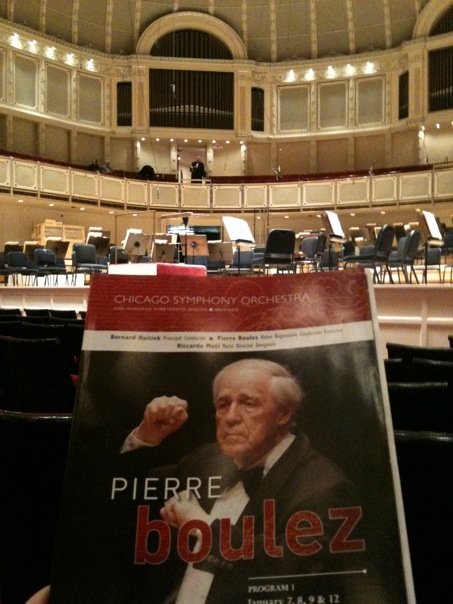 On our first night in town we walked by the symphony hall and noticed that Pierre Boulez was conducting one of his 85th birthday concerts. We walked to the box office and got lucky enough to grab 2 of the last tickets! Watching Pierre Boulez conduct the orchestra is mesmerizing; so elegant, so minimal I would dare to say almost liminal. The offering started with his own composition Livre pour Cordes, followed by Bartók’s Concerto for Two Pianos, Percussion and Orchestra and Stravinsky’ s The Firebird as the last piece. We read in the program that two nights later The Chicago Art Institute presented a Conversation with Maestro Boulez. “Mr. Bulless” —as the attendant who sold Pierre tickets called him— was reflecting on modernism with Phillip Husher, the CSO program annotator. Here are just a few of the notes I took during the talk:
On our first night in town we walked by the symphony hall and noticed that Pierre Boulez was conducting one of his 85th birthday concerts. We walked to the box office and got lucky enough to grab 2 of the last tickets! Watching Pierre Boulez conduct the orchestra is mesmerizing; so elegant, so minimal I would dare to say almost liminal. The offering started with his own composition Livre pour Cordes, followed by Bartók’s Concerto for Two Pianos, Percussion and Orchestra and Stravinsky’ s The Firebird as the last piece. We read in the program that two nights later The Chicago Art Institute presented a Conversation with Maestro Boulez. “Mr. Bulless” —as the attendant who sold Pierre tickets called him— was reflecting on modernism with Phillip Husher, the CSO program annotator. Here are just a few of the notes I took during the talk:
— Importance to enhanced self teaching.
— The first “modern” composer was Beethoven.
— Paul Klee’s book on the Bauhaus lectures has been essential to his development.
—”Without Teleman I can live. Without Bach I cannot” —
* * * *
And last but not least were my extended visits to the Art Institute & library educating myself in XIXe century sculpture and architecture with a focus on Augustus Saint Gaudens (1848-1907). The museum collection is a great place for me to absorb and contextualize the works by and information on his predecessors & contemporaries. The Art Institute owns beautiful ASG works, among them his bas-reliefs of Violet Sargent, Jules Bastien-Lepage & Amor Caritas. There are also four of his major public art pieces in Chicago:
—Lincoln Park: The Standing Lincoln & The Bates Fountain —on the last one he collaborated with his former pupil Frederick MacMonnies.
—Grant Park: The Seated Lincoln —behind the Art Institute—
The General Logan Memorial —Michigan Ave & 9th Street—
An other important fact is that Augustus Saint Gaudens was advisor on sculpture for the 1893 Chicago World’s Fair —a.k.a The World’s Columbian Exposition or encore, The White City. He didn’t make any special work for the exposition but the first Diana that had been too big for the top of Madison Square Garden II found a home on top of the Agriculture Building designed by McKim, Mead & White.
 The first version of Saint-Gaudens’ Diana is on top of the Agriculture Building, left.
The first version of Saint-Gaudens’ Diana is on top of the Agriculture Building, left.
Voilà the report for the Chicago trip. The train ride in the roomette was wonderful, we had no delays and the food was totally acceptable. I loved the interaction with the train personnel. The one thing I really dislike is the toilet in the roomette. That is the silliest invention ever, I would much prefer to have more space and a public john in the corridor. There would be many other observation to report but that will have to be for another post. Thanks to all the welcoming people we met, hope to come back soon!










 A bas relief depiction of overfeeding geese
A bas relief depiction of overfeeding geese
